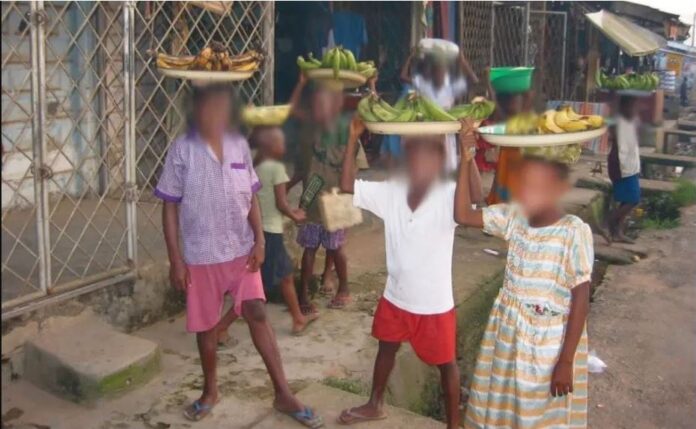Nigeria confirms is has 15m child workers against ILO Convention
By Jeph Ajobaju, Chief Copy Editor
There are no fewer than 15 million kids engaged in child labour in Nigeria, the government itself has confirmed, as the International Labour Organisation (ILO) laments about 160 million children are actively engaged in child labour worldwide.
Kachollom Daju, the Permanent Secretary, Federal Ministry of Labour and Employment, disclosed the Nigerian figure in Abuja but stressed the government is making efforts to reduce child labour and forced labour to the barest minimum, if not completely eradicated.
Children are leaders of the future, she stressed, and they should not be exposed to such practices at a tender age but rather shown love and properly catered for, in the interest of the country.
Her words: “Child labour is a multi dimensional development concern. It cuts across various lines: economic, social, religious, cultural and regional divides.
“The worst forms of child labour constitute exploitation and gross violation of human rights for both boys and girls, causing physical, emotional, and mental consequences for the child. Such violations take place at the household level, community level, institutions, and business areas.
“In Nigeria, child labour has become a scourge. Several children find themselves on the streets, forced to make a living, with others employed in industrial complexes and hazardous environments.
“This is attributable to various factors, such as poverty, ignorance, unemployment, absence of social security for the vulnerable, misinterpretation of cultural and religious beliefs and weak institutional framework.”
__________________________________________________________________
Related articles:
Malnutrition kills 2,400 children every day in Nigeria
UNICEF alerts rich Lagos has 200,000 stunted, wasted children
Food prices hamper Nigeria’s poverty fight, says World Bank
__________________________________________________________________
Implications for the future
“Statistics reveal that there are no fewer than 15 million child workers in Nigeria; this is according to the ILO, with the UN warning that the absence of mitigating strategies could see an exponential increase in the number of children engaged in child labour,” Daju said, per Vanguard.
“This, of course, will certainly have massive implications for the future.
“As a country however, we take pride in stating that giant strides have been made in dealing with this menace, most notably
“The adoption and ratification of ILO Conventions 138 and 182 on Minimum Age and Worst forms of Child Labour respectively
“The passage of the Child Rights Act into law to domesticate the Convention on the Rights of the Child, adopted by 35 state governments and the FCT
“The review and the validation of the National Policy on Child Labour and
“The National Action Plan on the Elimination of Child Labour, Prohibition and Elimination of Forced Labour, Modern Slavery, and Human Trafficking in workplaces spearheaded by the Federal Ministry of Labour and Employment, amongst many other achievements.”
Venessa Phala, ILO Country Office Director for Nigeria, Ghana, Liberia, Sierra Leone and Liaison Office for ECOWAS, disclosed 160 million children are actively engaged in child labour worldwide at a stakeholders meeting in Abuja,\
She said children have a right to better lives than engage in forced labour practices to shore up income on behalf of their parents.
Worldwide child labour
Phala reiterated that engaging under-aged children in eking out a living runs violates ILO Convention on the World of Work.
“We all know that the number of children engaging in child labour has risen to 160 million worldwide, which represents an increase of 8.4 million children when compared with the last report,” she added.
“In eradicating the scourge of child labour and force labour in Nigeria, concerted efforts are required from all stakeholders, part of which is the development of monitoring infrastructure to determine and measure its magnitude, distribution, dimensions and characteristics at the national and sub-national levels.”













